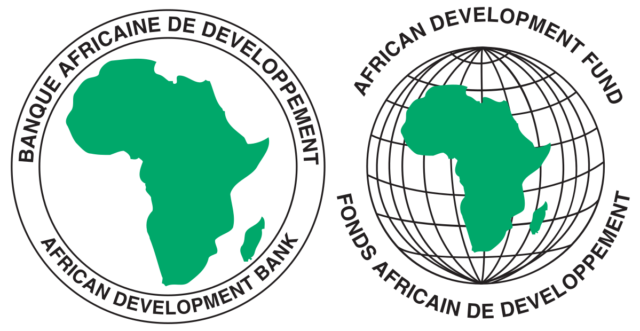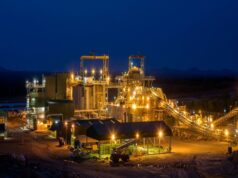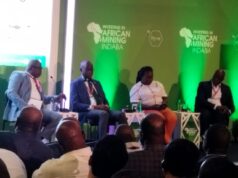- Official development assistance has stagnated significantly since 2010 or even fallen to its lowest level, reaching 34 billion dollars in 2022 (OECD)
- Access to international capital markets is still quite restrictive and very costly due to a high risk perception by investors
- The continent is not short of options
- About 30% of all global mineral reserves are in Africa, including 60% of cobalt reserves and 90% of platinum group metal reserves
- Africa contributes to the world’s annual production of six key minerals: 80% platinum, 77% cobalt, 51% manganese, 46% diamond, 39% chromium and 22% gold
- The Annual Meetings of the AfDB Group will discuss this issue from 22 to 26 May in Sharm el-Sheikh, Egypt.
Read the full AfDB press release
PRESS RELEASE
The continent contributes substantially to the world’s annual production of six key minerals: 80% platinum, 77% cobalt, 51% manganese, 46% diamond, 39% chromium and 22% gold
ABIDJAN, Côte d’Ivoire, 24 April 2023/ – Africa must be able to use all its comparative advantages to mobilise resources that will help it to finance its sustainable development ambitions. Official development assistance has stagnated significantly since 2010 and is expected to fall to a low of 34 billion dollars by 2022, according to estimates by the Organisation for Economic Co-operation and Development (OECD). Access to international capital markets remains quite restrictive and very costly due to a high perception of risk by investors. But the continent is not short of options and could, along with the mobilisation of the private sector, take advantage of its “enormous” natural capital potential. This potential ranges from freshwater bodies to vast forest resources to mineral deposits. This will be demonstrated at the Annual Meetings of the African Development Bank Group (https://apo-opa.info/3Uf8Uup), scheduled for 22-26 May in Sharm el-Sheikh, Egypt. For example, about 30% of the world’s mineral reserves are found on the continent, including 60% of cobalt reserves and 90% of platinum group metal reserves. The continent contributes substantially to the world’s annual production of six key minerals: 80% of platinum, 77% of cobalt, 51% of manganese, 46% of diamonds, 39% of chromium and 22% of gold. The continent also holds 7% of the world’s natural gas and oil reserves. In addition, Africa has more than 60% of the world’s undeveloped arable land and is home to 13% of the world’s population, 60% of which is under 25 years old, making it the youngest population in the world. About 75% of African countries have access to the sea, which offers large opportunities in the blue economy, whose global potential, managed in a sustainable manner, is estimated at about 1500 billion dollars. But all this natural potential is not always tapped by governments to mobilise resources. Private companies have sometimes taken better advantage of it. Hundreds of junior mining companies listed on international stock exchanges have, over the years, raised significant capital by simply promoting the potential of their exploration or exploitation permits for deposits based in Africa. Natural capital is also used spontaneously by hundreds of millions of people in the charcoal industry, whose business model is essentially based on deforestation. A few countries have been able to take advantage of this natural capital, such as Morocco, which has developed large solar and wind energy production fields. In 2022, the British company Xlinks, which specialises in renewable energy, has announced the construction of a 3,800-kilometre undersea cable that will enable the United Kingdom to benefit from this energy. In Egypt, the Nile, in addition to the operation of the Suez Canal, is used in various ways. Also in Egypt, the Benban solar photovoltaic plant, launched in 2018, will help increase the share of renewable energy to 42% by 2035. The park alone reduces CO2 emissions by two million tonnes per year. At full capacity, the park will produce 3.8 terawatt-hours of electricity per year, equivalent to 90% of the electricity produced by the Aswan High Dam. The Annual Meetings will discuss how Africa’s natural capital can become an important means of financing the continent’s climate change adaptation and mitigation actions, as well as its green growth ambitions, complementing private sector investments. Discussions will be held with climate change and natural capital experts and African ministers, governors of the bank. In addition to policy frameworks for Africa’s natural capital transformation, including local content and value addition, discussions will also focus on trade and regional integration; infrastructure, finance and investment policies; human capital and skills development; and technology upgrading. In September 2021, the African Development Bank launched a new initiative on integrating natural capital into development finance in Africa. This will provide an opportunity to take stock of this project and its initial achievements. The Egyptian hosts will also have a wealth of experience to share, as Egypt has managed to build a strong economy around its maritime and river assets, and has embarked on several green energy projects. Distributed by APO Group for African Development Bank Group (AfDB).
SOURCE: African Development Bank Group (AfDB)










